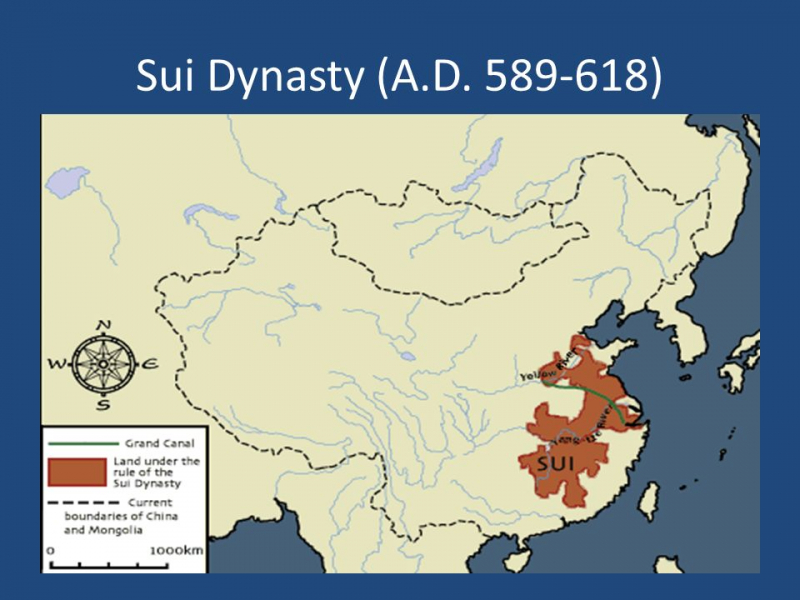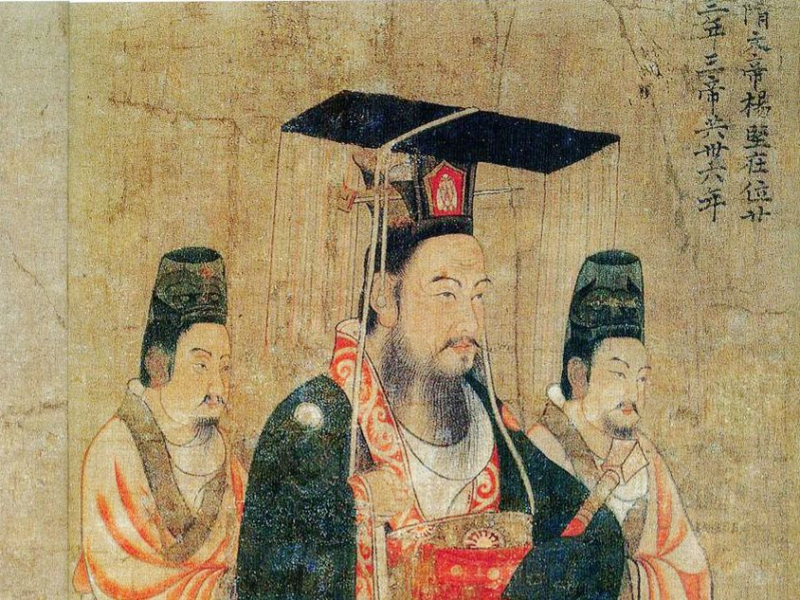The Sui Dynasty

China's Sui Dynasty, which ruled from 581 to 618, was a brief dynasty. After the Western Jin Dynasty fell, the Northern and Southern dynasties were united by the Sui, which also created the groundwork for a Tang dynasty that would last longer.
In 577, Northern Zhou-ruled Xi'an defeated Northern Qi and united Northern China toward the end of the Southern and Northern Dynasties. Yang Jian, a Han Chinese who would eventually form the Sui Dynasty, was appointed regent of the Northern Zhou court during this period. Emperor Jing of Northern Zhou was the stepchild of Empress Dowager Cixi, who was his daughter. Yang Jian overthrew the Northern Zhou emperors and assumed the title of Emperor Wen of the Sui dynasty after defeating an army in the eastern regions. Emperor Wen restored his Han surname Yang and ended Northern Zhou's anti-Han policies. Emperor Wen started a number of changes while in power during the preceding Han dynasties to fortify his realm in preparation for the battles to unify China. After his father's passing, Emperor Yang of the Sui Dynasty took the throne. He also carried on enlarging the empire.
Economically, numerous centralized changes were put into place by Emperor Wen and his successor Yang. The establishment of the Five Departments and Six Departments system, the forerunner of the Three Departments and Six Ministries system, as well as standardization and unification of coinage, are among the most notable examples. These systems aimed to reduce economic inequality and increase agricultural productivity. By the middle of the dynasty, the newly united empire had reached a heyday of wealth thanks to enormous agricultural surpluses that fed a fast expanding population. The Grand Canal was the Sui Dynasty's most notable legacy. The network's hub was the capital Luoyang, which served as a connection between the eastern commercial and agricultural hubs of Jiangdu (now Yangzhou in Jiangsu Province) and Yuhang (now Hangzhou in Zhejiang Province), as well as the northern boundary, which was close to present-day Beijing.
Culturally, the Sui Dynasty was very brief, yet it underwent a significant cultural shift from earlier times. Many of the early Sui dynasty cultural innovations were then developed further and solidified throughout the succeeding Tang dynasty. This comprised not only the large-scale public projects started, including the Great Wall and the Great Canal but also the political system created by the Sui, which the Tang inherited with little modification after starting out outside the dominant political structure.
In terms of religion, prior to the Sui Dynasty, during the Sixteen Kingdoms era and the Southern and Northern Dynasties, Buddhism was widely practiced. It originated in India and traveled through Kushan Afghanistan to China during the Later Han period. Buddhism gained popularity while centralized governmental power was weak, resulting in a cohesive cultural force that helped the country exit the conflict and become the Sui dynasty. Buddhism had a significant role in China's cultural revival during the Sui period. Initially, Buddhist ideas were absorbed through Sanskrit texts from India. However, towards the end of the Sixth and Sui Dynasties, indigenous Chinese schools of Buddhist thought started to thrive. The Tiantai school was established by Zhiyi, who also finished the Great Treatise on Concentration and Insight. He presented the Lotus Sutra's central Buddhist teaching, the idea that there are "Three Thousand Realms in One Moment of Life" in it.
Construction along the Great Wall of China was one of the primary work initiatives carried out by the Sui. However, these and other large-scale projects have put a burden on the economy and riled up the labor force. The uprising against China during the last few years of the Sui Dynasty expelled many strong Chinese men from rural fields and other jobs. The economy and agricultural base have both been further harmed by this. Men deliberately fracture their limbs in order to escape conscription; they refer to this behavior as "favorable foot" or "lucky foot". After the Sui Dynasty was overthrown, in 642 Emperor Taizong of the Tang Dynasty made an effort to put an end to the practice by punishing people who were found to be self-healing and injured with more harsh punishments.
In sum, the Sui Dynasty:
- lasted from 581 to 618, and was a brief dynasty under Emperor Wen and Yang.
- Economically, the establishment of the Five Departments and Six Departments system, the forerunner of the Three Departments and Six Ministries system, as well as standardization and unification of coinage, are among the most notable things.
- Regarding religion, Taoism, Buddhism, and Confucianism are still developed and maintained.
- Great constructions such as the Great Wall weakened the people and economy of China during the Sui Dynasty.
- 618 marked the fall of the Sui Dynasty.











